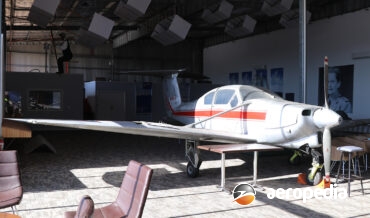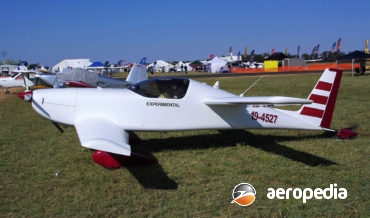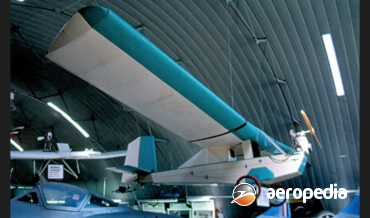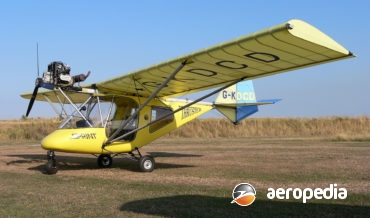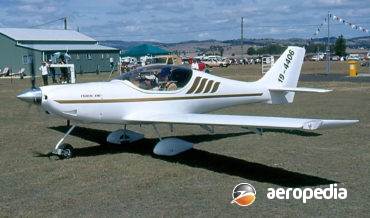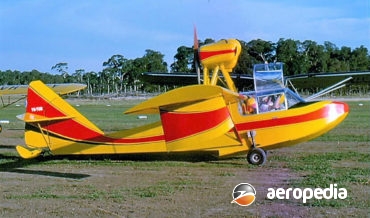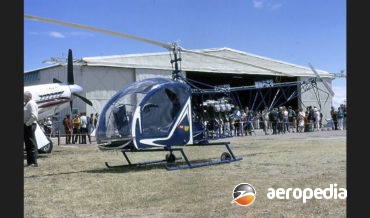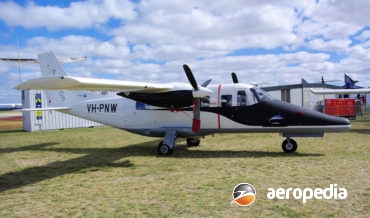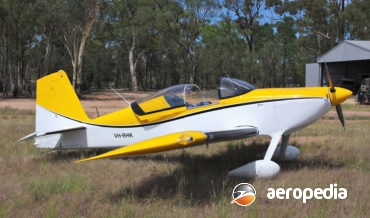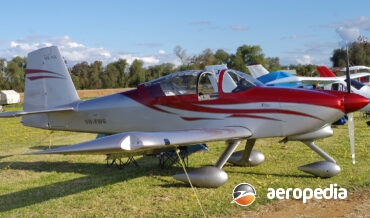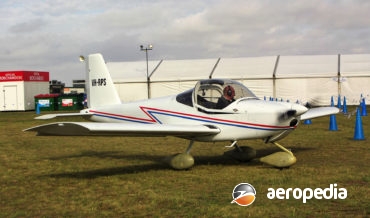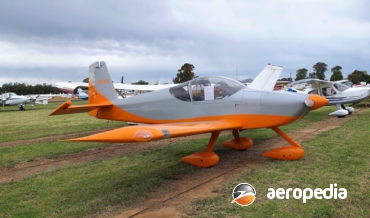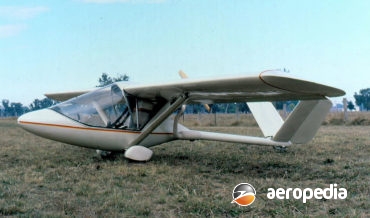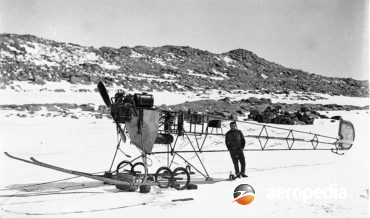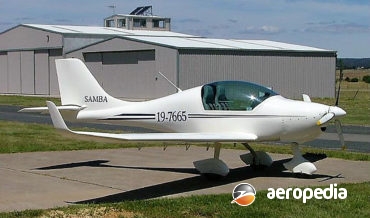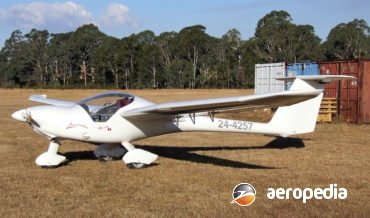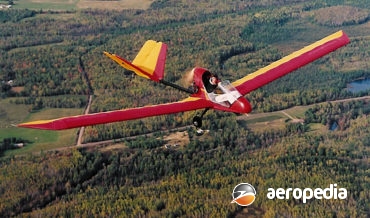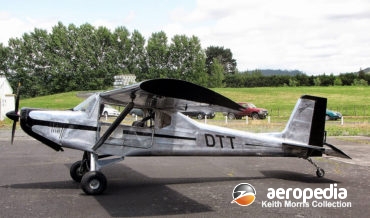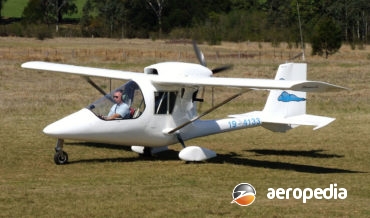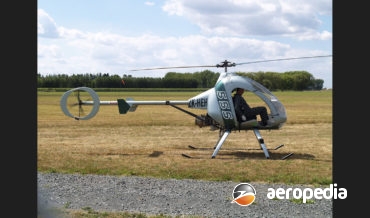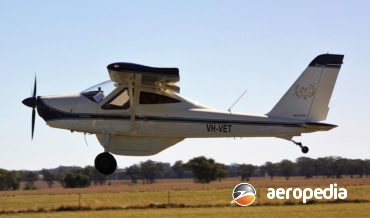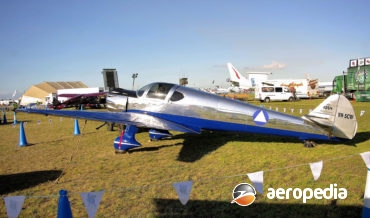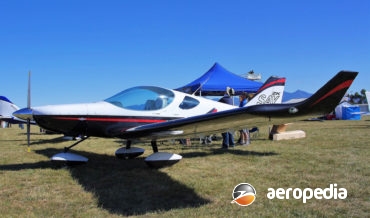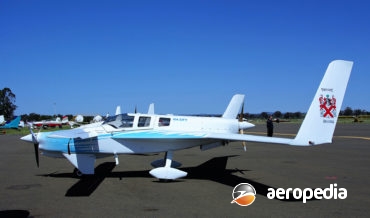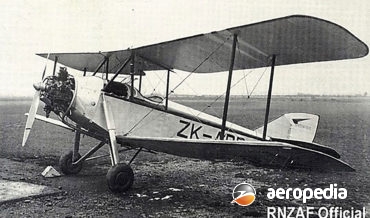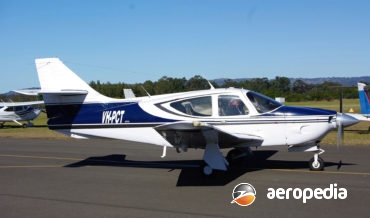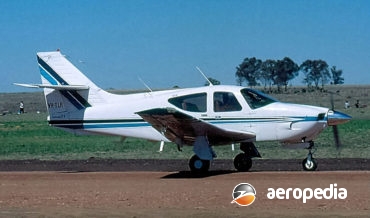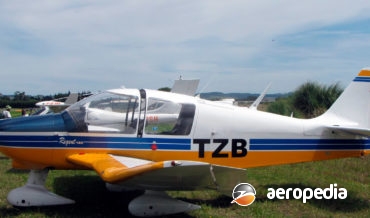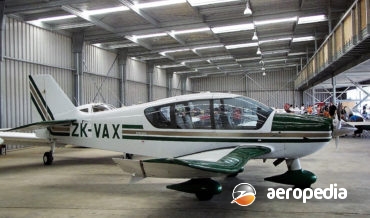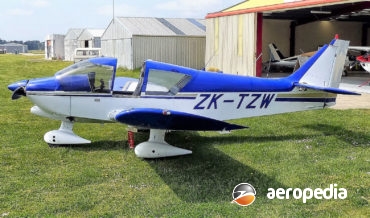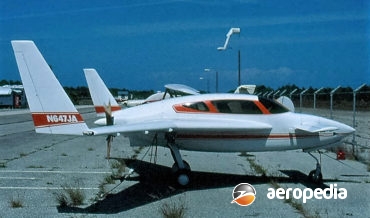All Contents
Contents
The Victa R-2 was a four-seat light monoplane designed for Victa Ltd by Mr Luigi Pellarini, designer of the Transavia Airtruk and a number of other aircraft.
David C. Eyre
- May 8, 2019
Although looking very similar to the Quickie series of aircraft, also being of canard configuration, the Dragonfly is a new design, being slightly larger and having, in the two-seat version, less power.
David C. Eyre
- May 8, 2019
The Skypup is one of a number of ultralight designs built and marketed by the Vintage Ultralight Assoc of Marietta, Georgia, models available including the Woodhopper, Gipsy, J-3 Junior, MW-7, Petit Breezy, SR-1 Hornet, Turnercraft and the Whing Ding 71.
David C. Eyre
- May 8, 2019
The Vision is a two-seat dual-control high-wing strut-braced monoplane suitable for training, recreation, and property work produced by Vision Aircraft at its manufacturing facility at Orange, NSW. A couple of variants are available, including the Vision 600 and the Vision 600 Mk 2.
David C. Eyre
- May 8, 2019
The VM-1 Esqual is a two-seat monoplane with fixed tricycle undercarriage high-performance light aircraft produced by Vol Mediterrani in a facility at Moia near Barcelona in Spain.
David C. Eyre
- May 8, 2019
The Sportsman two-seat amphibian was designed by Mr Volmer Jensen, and marketed by Volmer Aircraft of Burbank, California, and the prototype was flown for the first time on 22 December 1958.
David C. Eyre
- May 8, 2019
The Philicopter did not represent the first venture into the production of a commercial helicopter by an Australian company but it, like the Wikopter and the Moser, built in the 1960s, was one of the first. However none in fact have entered production.
David C. Eyre
- May 8, 2019
The A-Viator is a development of the Partenavia P-68 series, the production of which was acquired by Vulcanair SPA which carries out its operations from Casoriain in Italy.
David C. Eyre
- May 8, 2019
The RV-7 is another high-performance sporting monoplane offered by Vans Aircraft of North Plains, Oregon for amateur construction.
David C. Eyre
- May 8, 2019
The Vans RV-8 is another homebuilt produced by Van’s Aircraft Inc of North Plains, Oregon, and, like some other models, is produced in two versions, the RV-8 with a tailwheel undercarriage, and the RV-8A with a tricycle undercarriage.
David C. Eyre
- May 8, 2019
One of the range of very successful light homebuilt monoplanes produced by Vans at Oregon in the United States, the prototype of the series, the RV-9A (N96VA) with a tricycle undercarriage was first flown in 1997.
David C. Eyre
- May 8, 2019
The Vans series of light aircraft kit planes has been the most popular for homebuilders for some years and a variety of models is available.
David C. Eyre
- May 8, 2019
The Vans RV-14 and RV-14A series was introduced to the sporting aviation market in 2012 and although similar in appearance to other aircraft in the series, is better described as a two-seat variant of the RV-10 series and is capable of some aerobatics.
David C. Eyre
- May 8, 2019
Mr VEEnstra was born in Dieman in the Netherlands on 16 January 1943 and emigrated to Australia in about 1954.
David C. Eyre
- May 8, 2019
The Wave amphibious light two-seat monoplane was introduced to the light aircraft market in June 2014 when the manufacturer, VICkers Aircraft Ltd of Te Rapa, near Hamilton, when the company announced the prototype of its aircraft was nearing completion and testing from an airfield near Hamilton.
David C. Eyre
- May 8, 2019
Vickers Ltd of Westminster was founded in 1911 under the control of Major H F Wood, the firms Commercial Aviation Department being placed under the control of Brigadier General Caddell.
David C. Eyre
- May 8, 2019
The Samba prototype was first flown in 1999 and is similar to the Lambada but had a shortened wing and shortened fuselage.
David C. Eyre
- May 8, 2019
The Lambada is one of a series of ultra-light aircraft produced in the Czech Republic by Urbanair at Libchavy, being designed by Pavel Urban, Karel Faltus and Milos Mladek.
David C. Eyre
- May 8, 2019
The Cloud Dancer was designed by Messrs Erwin Rodger and Roger Delura as a single-seat self-launched glider for the US market and marketed by UYS Aviation.
David C. Eyre
- May 8, 2019
The WT-01 and WT-02 Klassik aircraft, known as the Wild Thing were introduced to the light aircraft market in 1997 by ULBI (Ultr-Leight-Bau International GmbH at Hafurt) in Germany as a two-seat light sporting aircraft, being a strutted, high-wing aircraft, the basic variation in the two models being the installation
David C. Eyre
- May 8, 2019
In 1978 Mr Dale Kramer designed the Lazair, one of the first twin-engined ultra-lights, and commenced selling kits to amateur builders through Ultra Flight Sales Ltd.
David C. Eyre
- May 8, 2019
The first of the Skydart series of light sporting aircraft was flown in 1984 and since then it has been developed by Ultralight Aviation of Grays Point, NSW, later of Rosemeadow, NSW its designer being Steven Cohen.
David C. Eyre
- May 8, 2019
The Stolareo was one of a number of ultralight aircraft designed by Stephen Cohen and built by Ultralight Aviation, others including the Condor, Avenger and Avenger II.
David C. Eyre
- May 8, 2019
New Zealand based Ultrasport Helicopters NZ Ltd of Manaia, Taranaki has developed a turbine variant of the American Sportscopter.
David C. Eyre
- May 8, 2019
The Super Pelican was designed by Jean Rene Le Page in Quebec, Canada and was a development of the smaller and earlier Le Pelican which was also an ultralight aircraft and was fitted with a half-conversion of a Volkswagen engine reduced from four cylinders to two.
David C. Eyre
- May 8, 2019
The P-92 TailDragger was introduced to the Tecnam range in 2012 to celebrate the 20th anniversary of the P-92 series of light aircraft, with some 2,500 examples of the series having been delivered by the end of 2012, the type operating in many countries around the World.
David C. Eyre
- May 8, 2019
In August 1937 the Ryan Aeronautical Company rolled out a new design, the SC series being a Sport Coupe of all metal construction.
David C. Eyre
- May 8, 2019
The prototype of the NG4 Stratus [OK-NUR 20] powered by a Rotax 912ULS engine was flown for the first time on 23 March 2008, this being a new type from the Czech Republic designed to meet American and European light-sports aircraft regulations.
David C. Eyre
- May 8, 2019
The Panther was an American designed strut braced monoplane imported by Rotec Rally Australia of QLD for sale on the Australian market.
David C. Eyre
- May 8, 2019
The prototype of the Rutan Model 40 Defiant (N78RA) was designed as a ‘proof of concept’ aircraft and made its first flight on 30 June 1978.
David C. Eyre
- May 8, 2019
The Redwing was designed by John Kenworthy as a light touring biplane, being built by Robinson Aircraft Co Ltd of Stafford Road, Wallington, Surrey, which later in 1931 became Redwing Aircraft Co Ltd.
David C. Eyre
- May 8, 2019
The first of a new series of single-engine monoplanes, the prototype Commander 112 was flown for the first time on 4 December 1970 powered by a 134-kw (180-hp) Lycoming O-360 engine.
David C. Eyre
- May 8, 2019
Over the years the early variants of the Model 112 were perceived as under-powered and had limited load capability and the manufacturer addressed these problems in November 1975 with the Model 114, of which more than 1,100 were delivered.
David C. Eyre
- May 8, 2019
Mr Mervyn VICtor Richardson (1893 - 1972), founder later of the well known motor mower company, Victa Consolidated Industries, was born at Yarramalong, NSW and was one of the sons of Archibald George Heron Richardson and his wife, Charlotte Martha, nee Griffith.
David C. Eyre
- May 8, 2019
In 1984 in the United States Gerald Ritz designed an ultra-light aircraft and commenced to supply plans to the amateur-built aircraft market but shortly after, whilst testing the aircraft was killed due, it is said, to a flaw in the aircraft’s design, this being related to the wing suffering aeroelastic
David C. Eyre
- May 8, 2019
Following the success of the DR.253 Regent, DR.315 Cadet, DR.340 Major, DR360 Chevalier and DR.380 Prince series of aircraft, all of which were basically of wooden construction, Centre Est, or Robin, introduced the DR.400, construction of the prototype of which began in 1971.
David C. Eyre
- May 8, 2019
Following the success of the DR.253 Regent, DR.315 Cadet, DR.340 Major, DR360 Chevalier and DR.380 Prince series of aircraft, all of which were basically of wooden construction, Centre Est, or Robin, introduced the DR.400, construction of the prototype of which began in 1971.
David C. Eyre
- May 8, 2019
The Aiglon was one of a series of touring monoplanes produced in France in the late 1970s and early 1980s and completed in small numbers, the prototype making its first flight on late 1976 and being known as the R.1180 Aiglon.
David C. Eyre
- May 8, 2019
A sister aircraft to the Rearwin Sportster in the Rearwin stable, the Model 8135 Cloudster was built by the company at its Fairfax Airport, Kansas, facility from 1940, at that time being powered by the Ken-Royce radial engine.
David C. Eyre
- May 8, 2019
Over the years the Berkut has been known by a number of names, depending on the company providing the kits, but these have included Renaissance Composites Inc of Santa Monica, California, and Berkut Engineering.
David C. Eyre
- May 8, 2019
Recent Comments
Archives
Categories
- No categories
Categories
- No categories
Latest Posts
Newsletter

